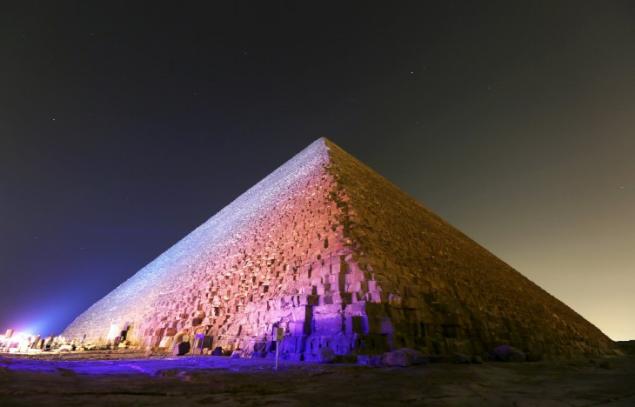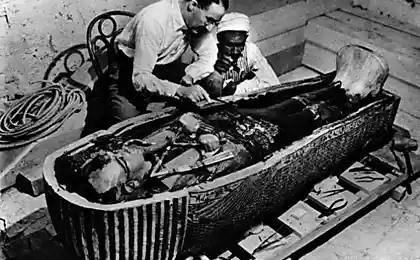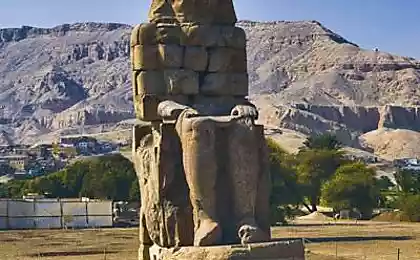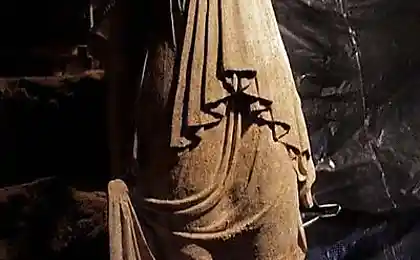733
Tombs of ancient Egyptian pharaohs once again put scientists in a deadlock
The Egyptian pyramids, built of blocks of limestone and granite slabs, always amaze tourists and baffled scientists. What's happened again!
Using thermography, archaeologists and scientists from Egypt, France, Canada and Japan studied the pyramids of Cheops, Sufisa II and Menkaure, built in 2613-292 years BC, at dawn, when the sun rises and begins to heat up, and at sunset - this cool down time of the tomb. In all of the monuments have been discovered "Warm stones».

According to experts, the most impressive temperature deviations were found in the Great Pyramid of Giza, the pyramid of Cheops it. Thermal camera recorded the temperature three lower adjacent stones located in the eastern side of the tomb, much higher than the rest
Previously, scientists believed that all the stones in the bottom row of the pyramid of Cheops are the same. Now it turns out that it is not. "Warm stones" were also found in the upper half of the tomb of Cheops.
According to the official version, the possible causes of this phenomenon can be empty areas inside the pyramid, the internal air flow or various building materials used in the construction of the pyramids. Now experts are looking for the tomb of cavities.
Great Pyramid will continue to explore the project Operation Scan Pyramids, which started on 25 October. He is scheduled to be completed in late 2016.
via www.vokrugsveta.ru/
Using thermography, archaeologists and scientists from Egypt, France, Canada and Japan studied the pyramids of Cheops, Sufisa II and Menkaure, built in 2613-292 years BC, at dawn, when the sun rises and begins to heat up, and at sunset - this cool down time of the tomb. In all of the monuments have been discovered "Warm stones».

According to experts, the most impressive temperature deviations were found in the Great Pyramid of Giza, the pyramid of Cheops it. Thermal camera recorded the temperature three lower adjacent stones located in the eastern side of the tomb, much higher than the rest
Previously, scientists believed that all the stones in the bottom row of the pyramid of Cheops are the same. Now it turns out that it is not. "Warm stones" were also found in the upper half of the tomb of Cheops.
According to the official version, the possible causes of this phenomenon can be empty areas inside the pyramid, the internal air flow or various building materials used in the construction of the pyramids. Now experts are looking for the tomb of cavities.
Great Pyramid will continue to explore the project Operation Scan Pyramids, which started on 25 October. He is scheduled to be completed in late 2016.
via www.vokrugsveta.ru/























